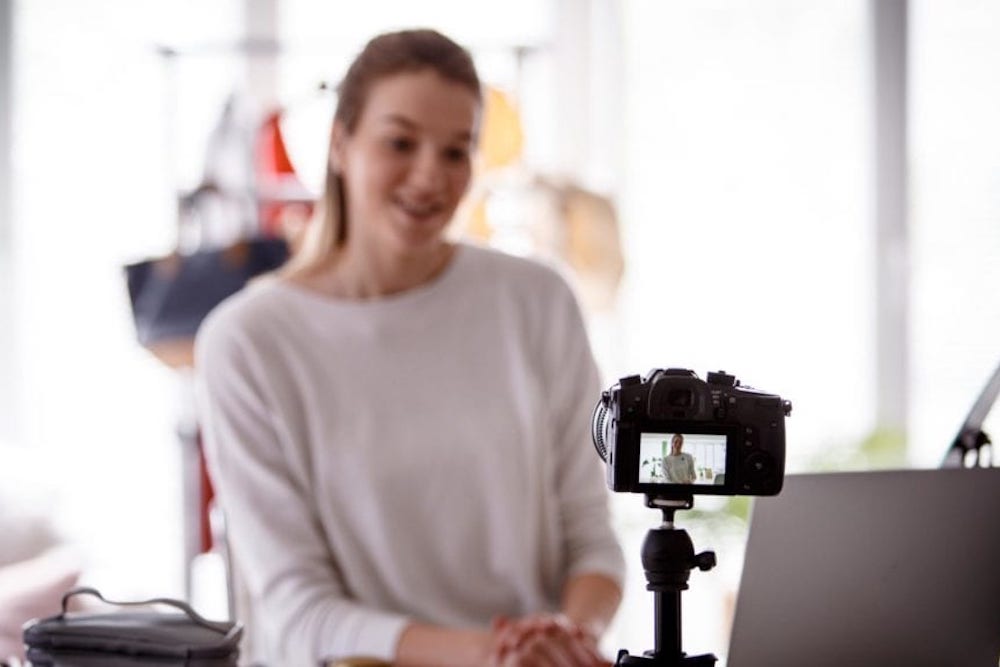With many schools closed and restrictions on gatherings and events, K-12 schools and colleges across the nation are now depending on virtual tours to show prospective students and families what their campus has to offer. If you don’t already have a virtual tour on your website, or if you have an outdated tour video, this is a great time to make a new one.
Even if you don’t have top-of-the-line equipment or a seasoned videographer, you can still make a quality video to engage your audience. Just follow this comprehensive list of do’s and don’ts to create a video that will bolster your enrollment efforts, even after you are able to resume in-person tours.

Video Do’s
- Plan Ahead
Plan the video shoot, scout the location, and write the narrative. A solid plan before you start recording will result in fewer edits. Have backup options for any people appearing in your video and alternate plans for any outdoor filming that can be interrupted by bad weather. Consider if you want a video with a narrator and some music, or if you want to combine video, images, text, and audio to create your virtual tour.
- Explore Technology Options
You have the option to record a virtual tour that can live on your website, Facebook page, or Instagram page. Prospective parents can access this tour at any time and view it more than once. You can even make the experience more engaging by using a 360 degree (3D) tool.
Another option is to offer live tours via Facetime or Zoom at designated times. Live tours allow participants to ask questions and interact with the school staff member who is conducting the tour. However, your messaging to promote these tours will take more effort and requires clarity about tour times and directions for accessing the tour.
- Know Your Audience Persona
Who is your audience? Remember the video should provide helpful information for them. What do you want your audience to do after watching the video? Ask yourself, what can I do or say in this video to motivate them to call the school for more information or to complete an application?
- Use the Landscape Format
Film horizontally (landscape) unless you are using a social media platform like Snapchat or Instagram. Shooting landscape gives your audience a more natural experience, inviting them into a wider world of possibilities.
- Have Ample Lighting
Lighting is a camera’s best friend. Look for areas with plenty of light, especially natural light, and avoid venturing into dark places. A well-lit subject with a poor camera will present better than a poorly-lit subject with a quality camera.
- Keep Backdrops Simple
Make sure backgrounds don’t drown out your subject. Your subject should be the one delivering the message — not the backdrop. However, sparsity can also be underwhelming. Don’t be afraid to engage your creative eye. A well-placed poster or some class artwork can add just the right amount of visual interest to make your backdrop pop.
- Scan Your Space with a Critical Eye
Make a clean sweep of the area to remove any unnecessary distractions or litter. You’ll be happy you threw away the empty water bottles when you’re showcasing pristine classrooms to eagle-eyed parents.
- Keep It Short, Concise, and Friendly
Online audiences have short attention spans. Typically, you’ll want to plan your videos to be shorter than three minutes. Be concise, but don’t forget to be friendly and inviting. Your audience will appreciate being invited rather than forced through the experience.
- Vary Your Shots
Variety is the spice of life. Try not to shoot just static images of people talking. Panning slowly around a classroom can be really helpful for your audience to absorb what they are seeing. Objects or people within the scene will help to give your shot perspective.
- Stabilize Your Camera
Try to use a tripod or other stabilizing device. Shaky videos are a fast way to lose your audience in an experience that feels cheap and poorly produced.
- Ensure Good Audio
Your audience will be more willing to endure poorer quality video than they will poor audio. We don’t like to listen to things that sound bad. If possible, invest in some quality audio equipment. A quality lav mic that plugs into a smartphone can be a worthwhile investment.
- Pick Some Music
Music is a great tool to bring videos to life and give them personality. Add background music, making sure it fits your desired audience and has a proper balance to emphasize the narration or voiceover. Watch other trending videos to get ideas. A few of the affordable music resources online include:
- Avoid Abrupt Starts and Stops
Press record, then pause three seconds before speaking. Do the same with the closing. Stop speaking then wait three seconds before hitting pause.
- Be Memorable
Give your audience a reason to share and a reason to come back. This can be done through your content or the way you present your campus.
Video Dont’s
- Don’t Depend on Fancy Equipment
The best cameras and equipment don’t make up for the quality lighting and storytelling that your planning will bring.
- Don’t Forget Your Audience
Your mother might watch your video, but that doesn’t mean your content is view-worthy. Remember your audience and stay on target.
- Don’t be Monotonous
Avoid a single person sitting in front of a camera just talking. That’s not the kind of experience that prospective parents and students want to have at your school.
- Don’t Rush Your Message
Speak clearly and audibly and let yourself smile. Remember, invite your audience in. Don’t force them through.
- Don’t Say Too Much
Let your visuals tell some of the story. Most of your audience is there for the content, not to hear you speak. Also, your goal is for them to take action, so give them a reason to do so. Leave some next steps and contact information in your video and add links to your video description as well.
- Don’t Take Your Audience on a Boat Ride
Zooming in and out of your video can make people seasick. Use still shots and live video to transition and keep your audience focused and on topic.
Need Help With Video Strategy or Execution?
North Star Marketing has a multimedia team with experience helping schools develop virtual tour videos, as well as strategies to promote videos to reach prospective parents through multiple channels. To explore how North Star can help your school develop an effective virtual tour, contact Micah Fox, by email or by phone at (336) 229–6610.




